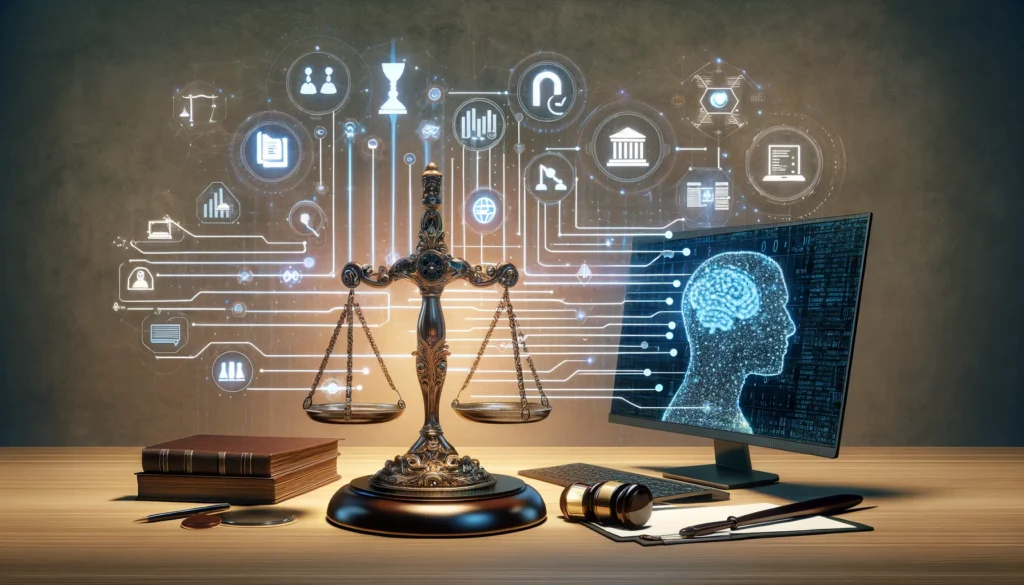
Revolutionizing Paralegal Workflows: A New Dawn
The legal industry, steadfast in tradition, is witnessing a transformative shift. The integration of technology into paralegal workflows is drastically changing how tasks are approached and executed, heralding a new dawn for legal professionals.
The Evolution of Paralegal Tasks
Historically, paralegals have been indispensable to law firms, shouldering significant responsibilities from research to due diligence. However, the increasing complexity and volume of regulatory requirements demand more efficient methods.
The Role of AI in Paralegal Tasks
AI, particularly language models like ChatGPT, is revolutionizing how paralegals manage repetitive and complex tasks. By providing high-speed, accurate, and insightful data processing, AI facilitates a more streamlined and efficient workflow.
Harnessing the Power of ChatGPT: Getting Started
Understanding the potential of AI is only the first step. The next phase is leveraging these powerful tools to enhance paralegal productivity.
Introduction to ChatGPT and LLMs
ChatGPT, an advanced Language Model (LLM) developed by OpenAI, excels at understanding and generating human-like text. It can assist in a variety of paralegal tasks, including drafting documents, conducting research, and creating compliance checklists.
Setting Up and Accessing the Tools
To get started, law firms need to integrate ChatGPT into their systems. This involves:
– **Subscription:** Enrolling in a service plan that fits the firm’s needs.
– **API Integration:** Seamlessly integrating ChatGPT’s API into existing workflows.
– **Training:** Providing staff with the necessary training to maximize the tool’s potential.
With these steps in place, paralegals are ready to craft effective prompts and leverage ChatGPT’s capabilities.
Crafting the Perfect Prompts: The Art of Inquisition
Creating effective prompts is an art form that enhances the utility of ChatGPT. The more precise and detailed the prompt, the better the output.
Fundamentals of Creating Effective Prompts
Effective prompts should be:
– **Specific:** Clear and concise questions yield more accurate answers.
– **Contextual:** Providing relevant context ensures the AI understands the task at hand.
– **Open-ended:** Encouraging comprehensive responses rather than simple yes/no answers.
Nuanced Prompting Techniques for Maximum Output
For nuanced tasks, employ advanced techniques:
– **Sequencing:** Break down complex tasks into smaller, manageable steps for detailed output.
– **Feedback Loop:** Use iterative prompts for refining responses until they meet requirements.
– **Templates:** Create standard prompts for repetitive tasks to ensure consistency and efficiency.
Examples of Basic to Advanced Prompts
– **Basic:** “List the corporate compliance requirements for a multinational company.”
– **Intermediate:** “Draft a comprehensive checklist for GDPR compliance for a tech company.”
– **Advanced:** “Identify potential compliance risks in the following corporate structure and suggest mitigation strategies.”
Streamlining Compliance Checklists: A Step-by-Step Guide
Creating comprehensive compliance checklists is a critical task for paralegals, ensuring that firms adhere to all regulatory requirements. Here’s a step-by-step guide to streamline this process with ChatGPT.
Identifying and Outlining Compliance Requirements
1. **Research and Gather Requirements:** Use ChatGPT to compile relevant regulatory requirements by inputting tailored prompts.
2. **Categorize Requirements:** Organize the gathered data into categories such as financial, operational, data protection, etc.
Generating Comprehensive Compliance Checklists
1. **Utilize Templates:** Input identified requirements into pre-designed templates for uniformity.
2. **Prompt Sequence:** Break down prompts into sections to ensure each area is thoroughly covered. For example, use prompts like “List financial compliance requirements for a publicly traded company.”
3. **Iterative Refinement:** Continually refine the checklist through iterative feedback loops, enhancing accuracy and comprehensiveness.
Ensuring Accuracy and Precision with AI
– **Cross-Verification:** Use multiple prompts to cross-verify facts and ensure information accuracy.
– **Contextual Adjustment:** Adjust prompts based on the specific legal environment or jurisdiction, ensuring tailored and relevant outputs.
Maximizing Efficiency: Advanced Tips and Tricks
To fully harness the power of ChatGPT, it’s essential to employ advanced strategies that streamline workflows and boost productivity.
Leveraging Metadata and Annotations
– **Metadata Utilization:** Embed metadata in prompts to guide the AI towards more precise outputs.
– **Annotations:** Use annotations to provide additional context, improving the relevance and specificity of responses.
Utilizing ChatGPT’s Memory for Consistent Outputs
– **Persistent Context:** Leverage ChatGPT’s memory features to maintain context across multiple sessions, ensuring consistent and coherent outputs.
– **Session Summaries:** Use session summaries to provide continuity, enhancing the AI’s ability to retain and build upon previous information.
Automating Repetitive Tasks and Integrations
– **Automation Tools:** Integrate ChatGPT with automation tools like Zapier to streamline repetitive tasks.
– **Document Generation:** Automate document generation processes, reducing manual inputs and errors.
Overcoming Challenges: Common Pitfalls and Solutions
While powerful, AI comes with its challenges. Understanding and mitigating these pitfalls is crucial for seamless integration.
Addressing Bias and Verifying Information
– **Bias Mitigation:** Regularly review and adjust prompts to minimize biases in AI-generated outputs.
– **Verification:** Always cross-verify information through secondary sources to ensure reliability.
Managing Large-Scale Document Handling
– **Chunking:** Break down large documents into smaller sections for more efficient processing.
– **Parallel Processing:** Utilize parallel processing techniques to handle extensive data more effectively.
Ensuring Confidentiality and Data Security
– **Secure Access:** Implement robust security protocols to safeguard sensitive information.
– **Compliance:** Ensure AI usage complies with relevant data protection regulations, such as GDPR or HIPAA.
The Future of Paralegal Efficiency: Embracing AI
AI’s integration into paralegal workflows is not just a trend, but a fundamental shift. Emerging technologies promise even greater efficiency and accuracy, paving the way for an AI-enhanced legal landscape.
Trends and Innovations on the Horizon
From AI-driven legal research tools to fully automated document generation systems, the future holds vast potential for increased productivity and innovation in the legal domain.
Preparing for an AI-Enhanced Legal Landscape
Embracing this technological shift, law firms must invest in continuous learning and adaptation, equipping their teams with the skills to effectively harness AI. The era of AI-driven paralegal efficiency has just begun.


